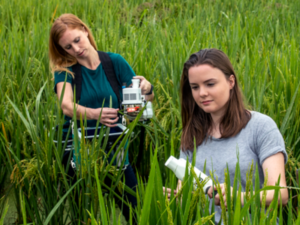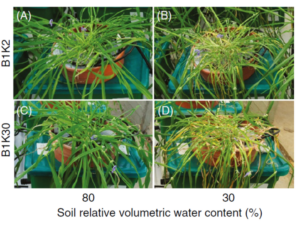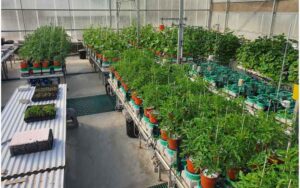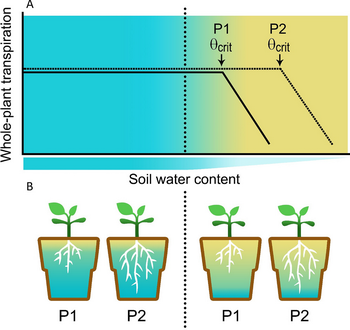
Today, most of the stress-related characterization of roots is morphological.
Yet, the ability to characterize and compare physiological traits of plants’ roots under stress is priceless.
Why is it so important?
A good agronomic definition to drought is the point at which soil water content becomes a limiting factor for plant transpiration. This point of drought-initiation is highly related to the capability of roots to take full advantage of any available water. Consequently, plants with better root performance capabilities which may be the result of root architecture, anatomy, biochemical or physiological mechanisms, will present lower drought point values (see figure 2) and better resilience capabilities (recovery of transpiration rate following re-watering).
Additional functional characterization of root performance is based on root daily flux rates, where roots with higher hydraulic conductance have been reported to support higher transpiration rates under both well-irrigated and saline conditions, resulting in increased photosynthesis and yield.
In recent decades, major research efforts have been implemented to understand plant stress responses. However, despite spectacular improvements in the genetic tools, a large gap still exists between those research investments and the actual commercial lines of stress-tolerant crops released to the market. There is major acceptance that roots have a key role in improving plant stress response. We believe that in addition to the classical root phenotyping methods (mainly based on root morphology), the identification of physiological root markers are incredibly important for efficient breeding processes and to facilitate breeding for stress ideotypes.
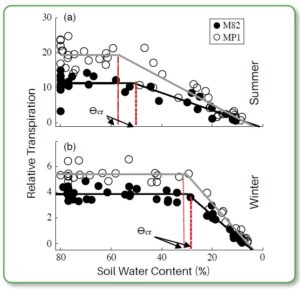
A recently published article (Halperin et al., The Plant J. 2016) describes how Plantarray’s functional physiological phenotyping method identifies the critical point (Ɵcrit) at which soil water content becomes a limiting factor for plant transpiration under stress. Soil-moisture probes are used to continuously and precisely measure the rates at which water flows into the roots (Jr) of individual plants. The flow rate is measured at the same time as other environmental signals and physiological parameters to allow for the comparison of multiple functional traits, including Ɵcrit.
This method provides users with the ability to select the best performing roots in general, and under drought specifically, according to physiological trait comparisons.
Want to know more? Contact our experts.

